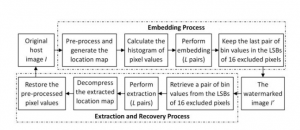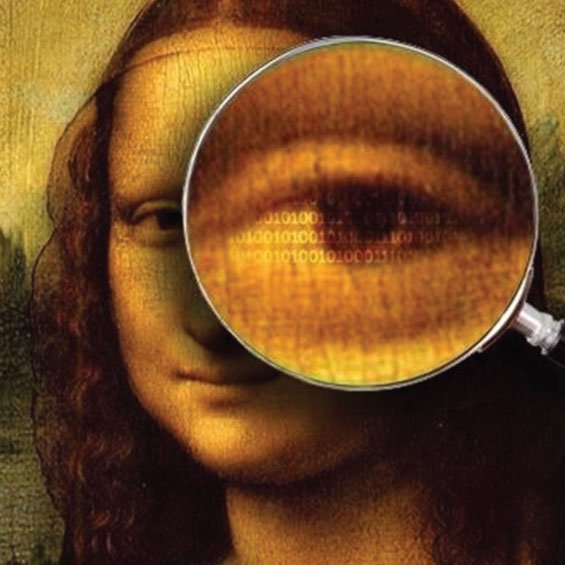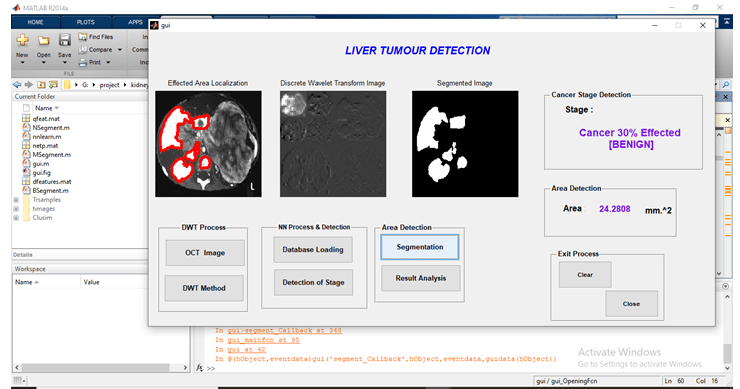Description
Reversible Data Hiding With Contrast Enhancement
Abstract
In this project, a novel reversible data hiding (RDH) algorithm is proposed for digital images. Instead of trying to keep the PSNR value high, the proposed algorithm enhances the contrast of a host image to improve its visual quality. The highest two bins in the histogram are selected for data embedding so that histogram equalization can be performed by repeating the process. The side information is embedded along with the message bits into the host image so that the original image is completely recoverable. The proposed algorithm was implemented on two sets of images to demonstrate its efficiency. To our best knowledge, it is the first algorithm that achieves image contrast enhancement by RDH. Furthermore, the evaluation results show that the visual quality can be preserved after a considerable amount of message bits have been embedded into the contrast-enhanced images, even better than three specific MATLAB functions used for image contrast enhancement.
Introduction:
Reversible Data Hiding (RDH) has been intensively studied in the community of signal processing. Also referred to as invertible or lossless data hiding, RDH is to embed a piece of information into a host signal to generate the marked one, from which the original signal can be exactly recovered after extracting the embedded data. The technique of RDH is useful in some sensitive applications where no permanent change is allowed on the host signal. Most of the proposed algorithms are for digital images to embed invisible data or a visible watermark. To evaluate the performance of an RDH algorithm, the hiding rate and the marked image quality are important metrics. There exists a trade-off between them because increasing the hiding rate often causes more distortion in image content. To measure the distortion, the peak signal-to-noise ratio (PSNR) value of the marked image is often calculated. Direct modification of image histogram provides less embedding capacity. In contrast, the more recent algorithms manipulate the more centrally distributed prediction errors by exploiting the correlations between neighboring pixels so that less distortion is caused by data hiding. Although the PSNR of a marked image generated with a prediction error-based algorithm is kept high, the visual quality can hardly be improved because more or less distortion has been introduced by the embedding operations. For the images acquired with poor illumination, improving the visual quality is more important than keeping the PSNR value high. Moreover, contrast enhancement of medical or satellite images is desired to show the details for visual inspection. Although the PSNR value of the enhanced image is often low, the visibility of image details has been improved. To our best knowledge, there is no existing RDH algorithm that performs the task of contrast enhancement so as to improve the visual quality of host images. So in this study, we aim at inventing a new RDH algorithm to achieve the property of contrast enhancement instead of just keeping the PSNR value high.
System Analysis
Existing Systems
- Principal Component Analysis
- Adaptive histogram shifting
- Pixel value ordering
Drawbacks of Exisitng System
- High Computational load
- Large feature set.
- Less accuracy
- Less quality of data
Proposed Method
- ROI
- Contrast enhancement
- PSNR
Advantages
- It is to be simple and effective
- Better texture and edge representation
- Better efficiency
- High PSNR value
Block Diagram

Requirement Specifications
Hardware Requirements
- system
- 4 GB of RAM
- 500 GB of Hard disk
Software Requirement
- MATLAB 2014a
REFERENCES
1.” Method and system for non-destructive image editing”, Jan. 2001.
2.” System for non-destructive image processing”, Mar. 2015.
3.S. Kim, R. Lussi, X. Qu, and H. J. Kim, “Automatic contrast enhancement using reversible data hiding”, Proc. IEEE Int. Workshop Inf. Forensics Secur., pp. 1-5, Nov. 2015.
4.H.-T. Wu, J.-L. Dugelay and Y.-Q. Shi, “Reversible image data hiding with contrast enhancement”, IEEE Signal Process. Lett., vol. 22, no. 1, pp. 81-85, Jan. 2015.
5.G. Gao and Y.-Q. Shi, “Reversible data hiding using controlled contrast enhancement and integer wavelet transform”, IEEE Signal Process. Lett., vol. 22, no. 11, pp. 2078-2082, Nov. 2015.



































































































































































































































































































































































































































































































































































































































































































































































































































































































































































































































































Customer Reviews
There are no reviews yet.